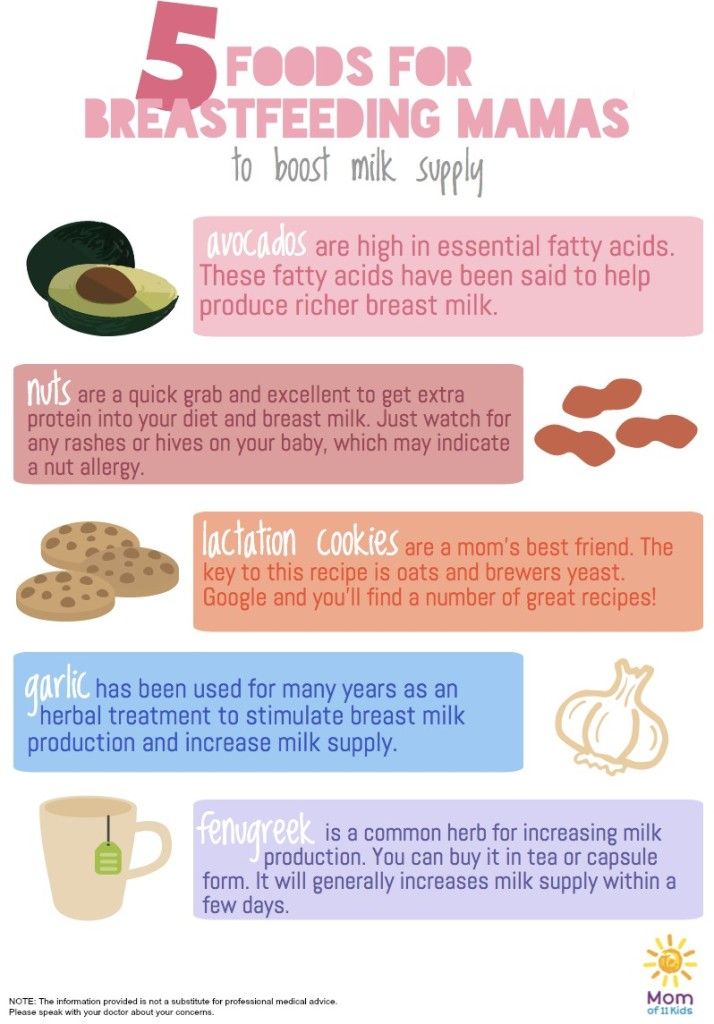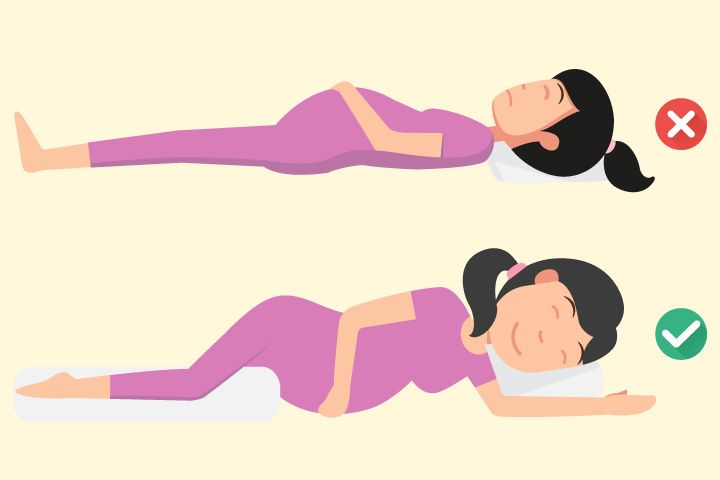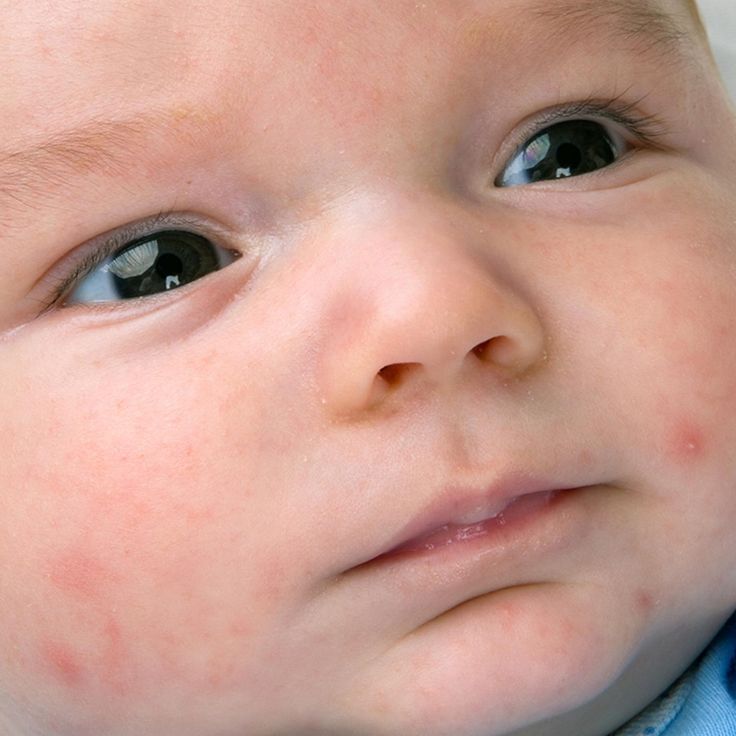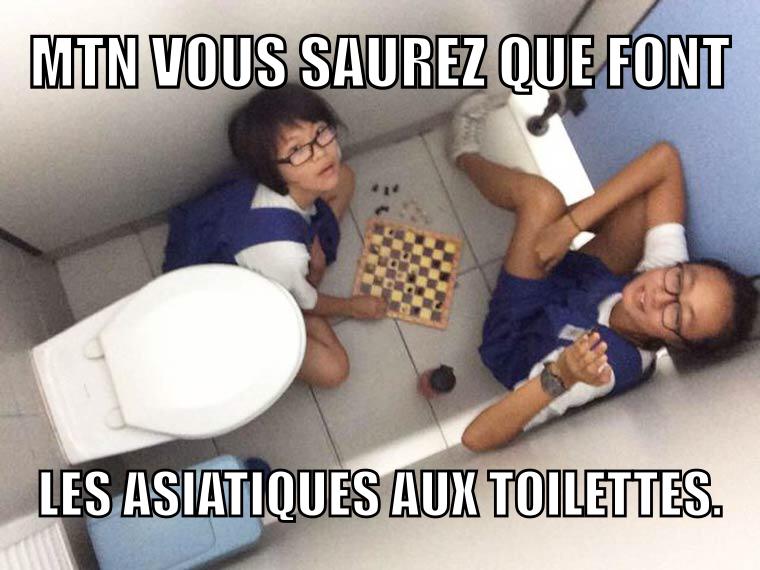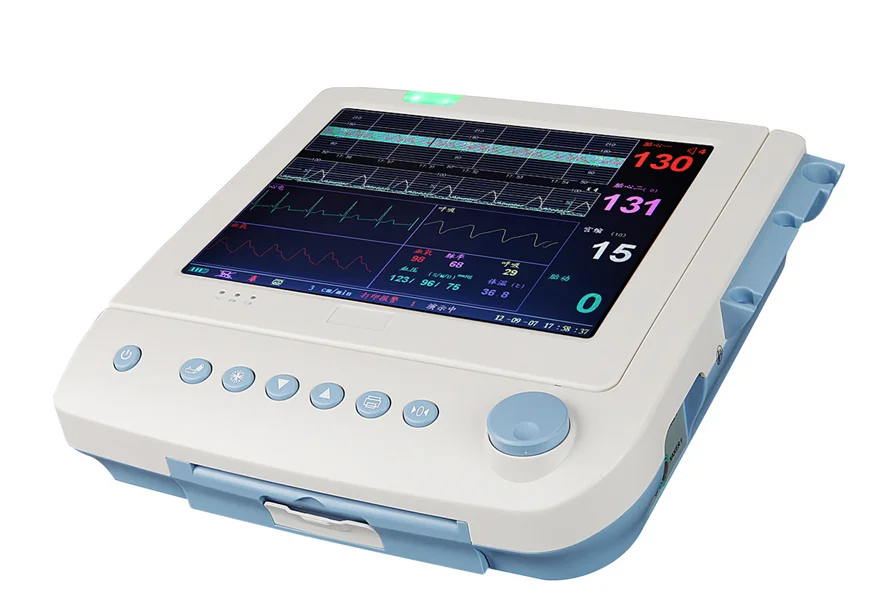How to potty train a child with special needs
Potty Training Children with Special Needs
The issue of when and how to begin toilet training can be particularly challenging for parents of children with special needs. The sense of accomplishment when they do succeed in this important aspect of self-care can make an enormous difference in their level of self-esteem.
Perhaps more than other parents, those who have children with physical, intellectual, or
developmental disabilities can appreciate the toilet-training process as a way to follow and celebrate a child’s overall growth. Rather than focusing negatively on setbacks, which are inevitable in any case, they can use the setbacks as opportunities to discover how their child learns best and to demonstrate to them that they are able to progress.
Toilet training works best when parents of children with special needs have access to the guidance, instruction, and encouragement of their pediatrician, other trained professionals (including school personnel), support groups, or a combination of all . The first step you must take is to determine whether your child is ready to begin.
Signs of potty training readiness are the same for your child as for all children:
Is your child aware of the difference between being wet and being dry?
Can they stay dry for at least two hours at a time?
Can they sense when he needs to urinate or have a bowel movement?
Are they capable of reaching the toilet or potty in time (perhaps with your help)?
Can they undress and dress themselves or are they ready to learn?
Are they motivated at some level to take this next step?
If your child is in a resistant phase, is not ready to take on a new challenge, or does not yet feel the urge to behave "like other kids" in this way, you might take some extra time to prepare them mentally before starting the potty training process.
If you feel that your child is ready, ask your pediatrician for their opinion.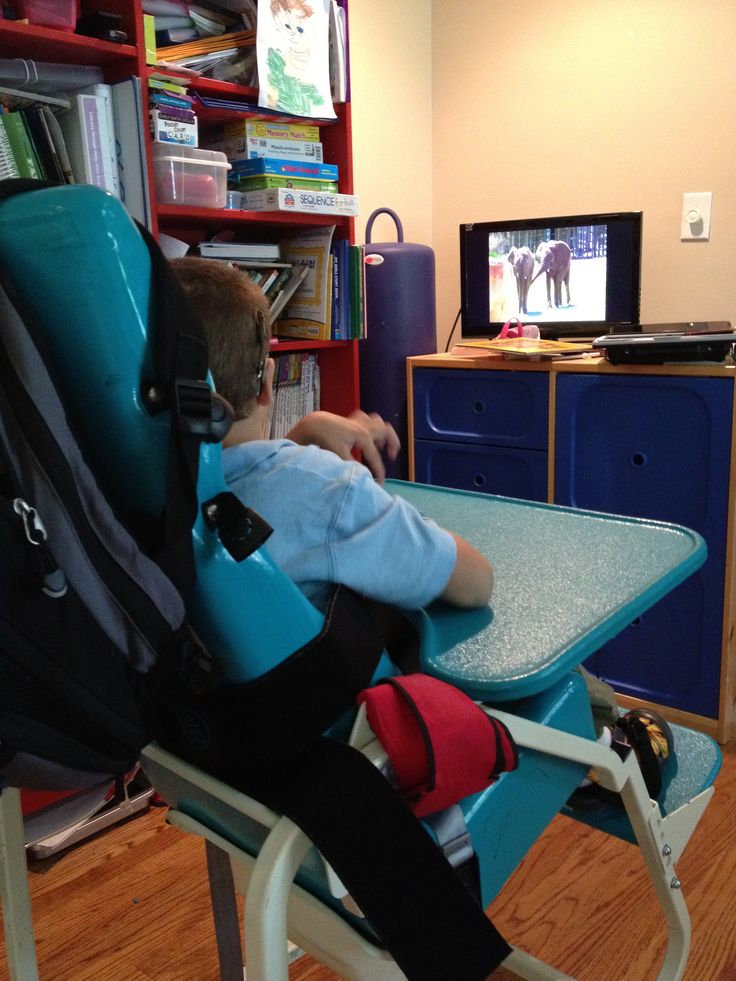 They can examine your child to offer a physical assessment and perhaps special insight into the particular needs of your child. They can also provide further information that you may need before starting, and let you know what types of special equipment may be advisable.
They can examine your child to offer a physical assessment and perhaps special insight into the particular needs of your child. They can also provide further information that you may need before starting, and let you know what types of special equipment may be advisable.
It is also important to prepare yourself emotionally before you and your child begin the process. Children with special needs often begin toilet training later than other children, frequently completing the process at age five years old or even later. Of course, children with some conditions may always need help with their clothing (button, zippers, tights) and some might need help getting to the bathroom. Some will develop innovative ways of achieving independence.
Learning to use the toilet can be physically painful to some, and challenging for others to understand. Accidents will happen, of course, and you will need to draw on an extra dose of patience and humor when they occur. Ask for help from your spouse, relatives or friends before you begin.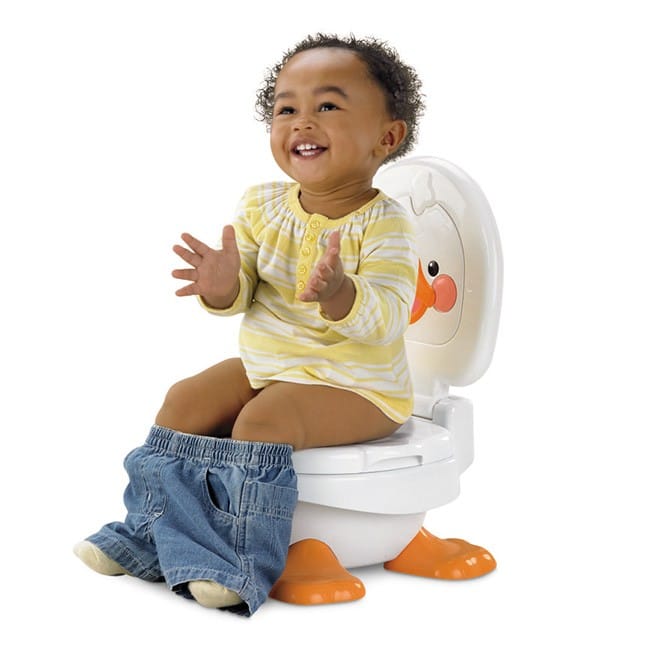
Physical challenges
A number of physical disabilities and illnesses can hinder a child’s ability to become fully toilet-trained or easily adjust to bathroom use. If your child faces such a challenge, you will need to think about how their unique situation affects each stage of toilet training and how you can compensate. Whether your child is unable to sense the need to urinate, has difficulty getting onto or staying on a standard potty or toilet or must adjust or readjust to toilet use after having used an ostomy device, they will need extra support from you and their other caregivers as they learn to master this new skill.
Visual disabilities
Children with
visual disabilities and those with sight deficiencies experience a disadvantage at several stages of toilet training. First, they might be unable to observe family members and peers using the toilet, so they cannot mimic their behavior. So many details of toilet or potty use—where the potty is in the bathroom, how the body is oriented to it as one sits down, how the urine and poop get into the potty, how one tears off and uses toilet paper—are simple to understand if a child can observe the process but difficult if they cannot.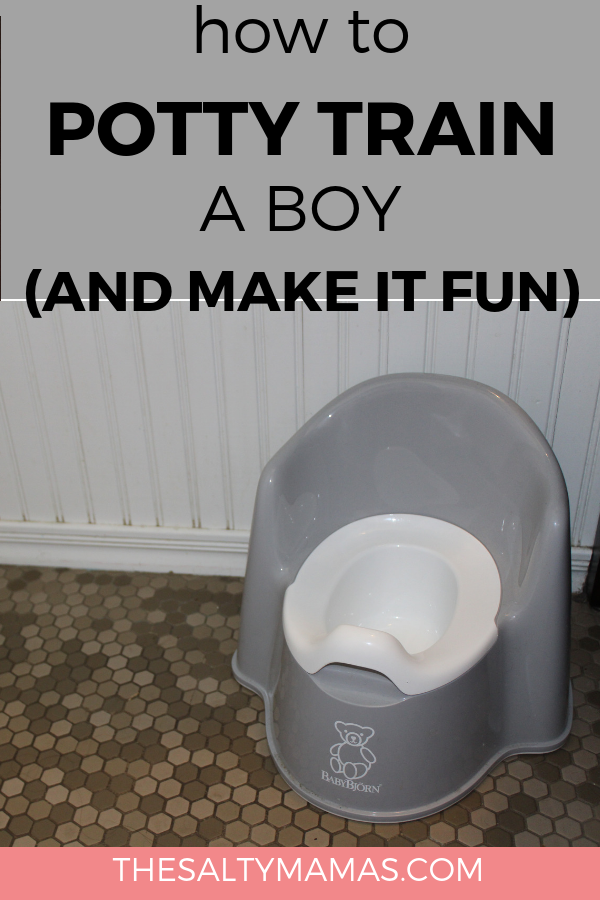 Without sight to help them, your child will need to rely more on language to understand how the process works. Because of this, you will probably want to wait a little longer to begin potty training—until they are three or four years old (or even later, since
language delays can accompany blindness)—so that they can fully comprehend what you are telling her.
Without sight to help them, your child will need to rely more on language to understand how the process works. Because of this, you will probably want to wait a little longer to begin potty training—until they are three or four years old (or even later, since
language delays can accompany blindness)—so that they can fully comprehend what you are telling her.
When you are ready to introduce your child with a visual impairment to the concept of toilet use, start bringing them with you when you use the bathroom. Allow them to explore the bathroom and locate the toilet. (Be sure it’s well ventilated and smells pleasant so they will want to return.) Place their hands on your shoulders so they can feel you sitting on the toilet, explain what you are doing and why, and guide her hands to the toilet paper dispenser. Also show them the flush handle and the sink for hand washing.
Once you have placed a potty in the bathroom, lead them to it, let them accustom herself to its presence, and keep it in the same place throughout the toilet-training process.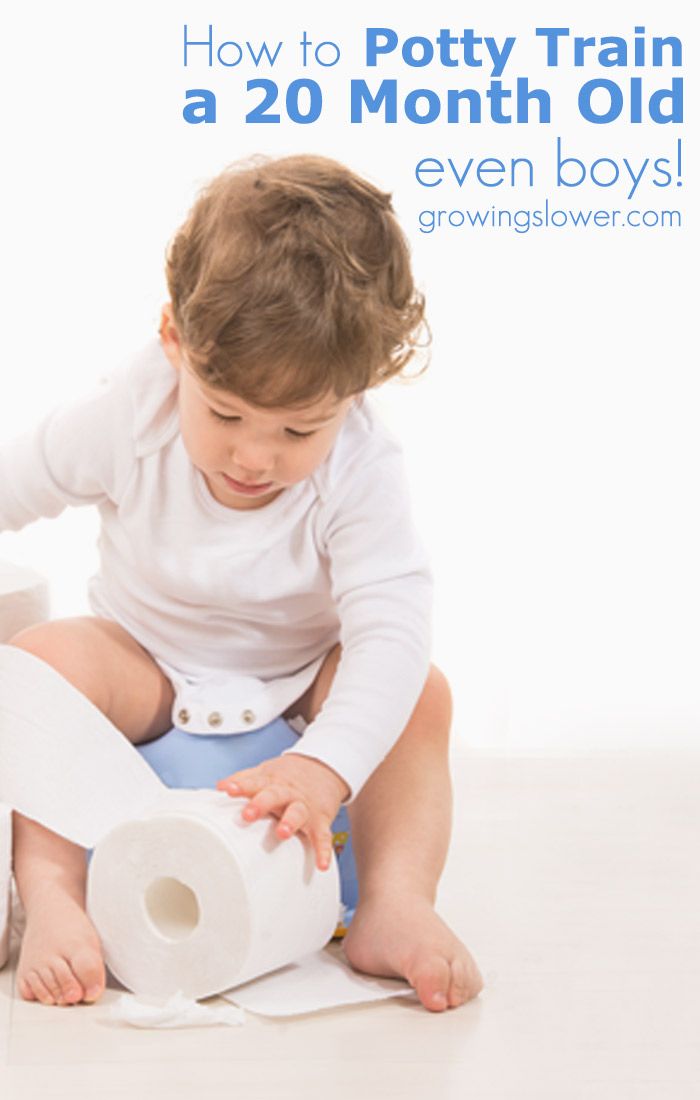 Talk to them about toilet use at other times, too—pointing out that most of the people they knows use the toilet and that toilet use is a sign of being a big kid who can take care of themselves.
Talk to them about toilet use at other times, too—pointing out that most of the people they knows use the toilet and that toilet use is a sign of being a big kid who can take care of themselves.
Once your child begins practicing potty use themselves, keep the bathroom and the passage to it clear of obstacles. A musical potty that is activated when urine hits the bowl might make the learning process more fun. Teach them to feel the inner edge of the seat before tossing in the toilet paper and, if the child is a boy urinating standing up at a toilet, to position his body so he doesn’t urinate on the toilet itself. (You may want to have your son first sit to urinate; once he masters that skill, then you can teach him to stand in front of the toilet.)
Finally, as your child grows more comfortable with bathroom use, make a point of taking them to the bathroom at each public place you visit. By helping them familiarize themselves with the wide variety of bathroom layouts and toilet styles, you will help build their self-confidence when away from home and prevent accidents.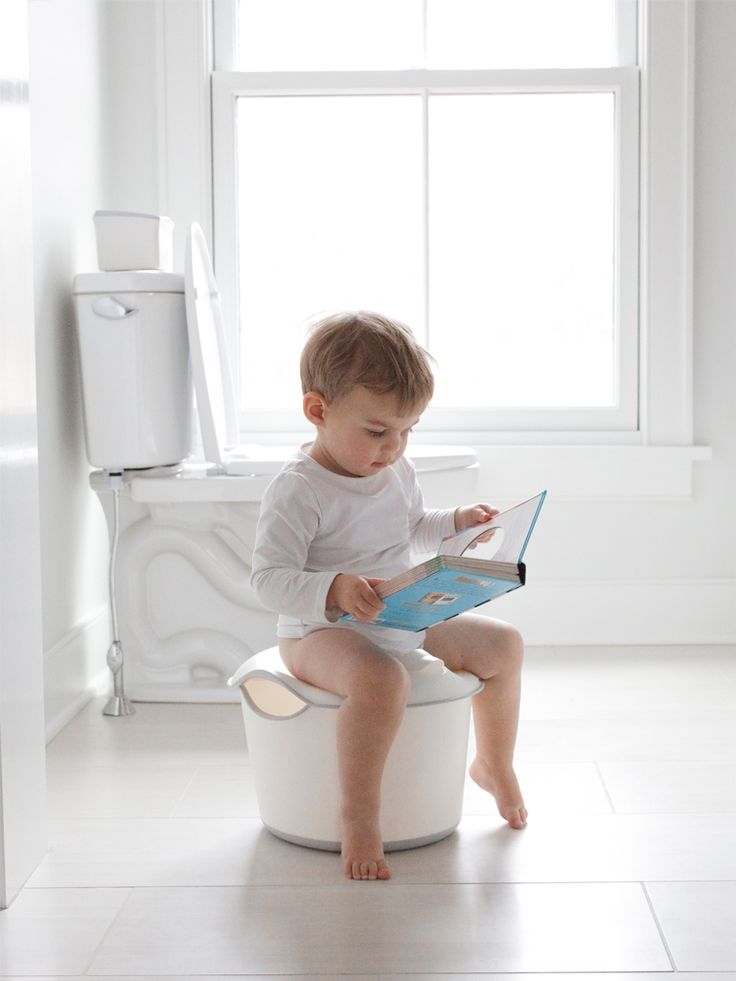 And don’t forget to reward their progress with praise, hugs or a small reward.
And don’t forget to reward their progress with praise, hugs or a small reward.
Hearing disabilities
Children who are deaf or have difficulty hearing may or may not find toilet training challenging, depending on their ability to communicate. A child who is already fluent in sign language can rely on a combination of visual observation and explanations from you to understand what’s expected of them—much like any other child. Children who do not yet have the ability to understand your signals and simple signs may not be ready for toilet training until they are somewhat older.
The key to training in these cases is to keep the process simple. When introducing the concept, emphasize the visual: Allow your child to observe you (and, even better, other children) using the bathroom, and show them picture books about it. Choose one gesture or sign for the essential terms
(pee, poop, potty, wet, dry, and
need to go). Use these gestures each time you use the bathroom, and use them with them as well—signing "wet" (with a sad face) when you change her diaper or wet underwear, "dry" (with a happy expression) once they've been changed, and "need to go" after lunch when it’s time to sit on the potty.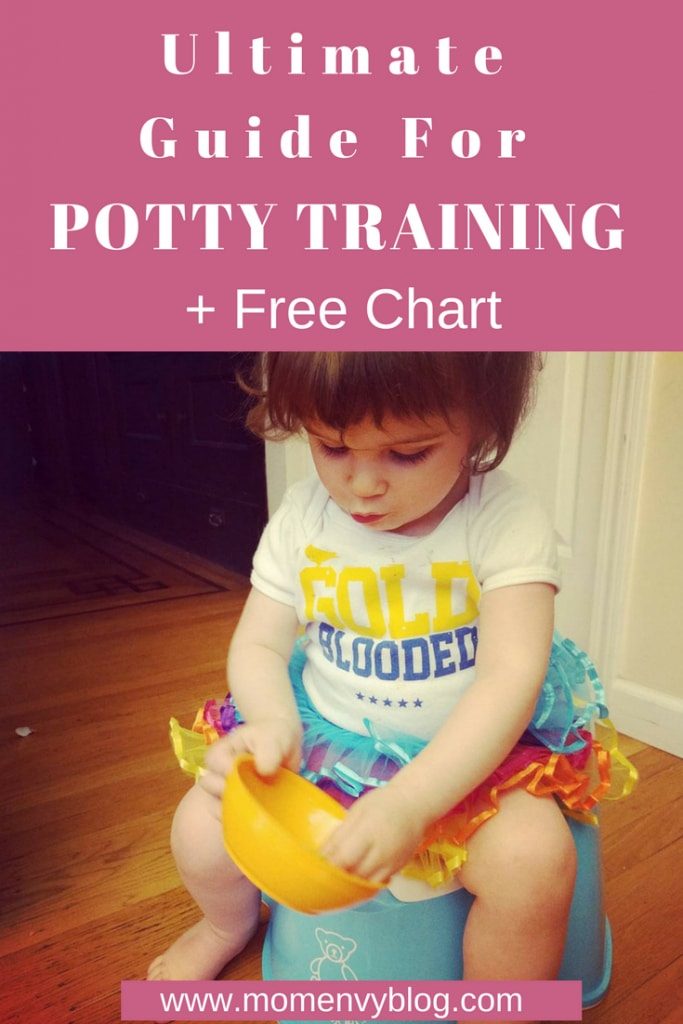
As long as you are consistent and stick with the half-dozen signals you need, your child will get the hang of potty use without longer explanations. When they do, be sure to reward them with plenty of hugs, stars on a potty chart or another small reward.
Continence problems
Some conditions have no effect on a child’s ability to understand the process of toilet training but make it difficult for a child to comply. Your child may grow increasingly frustrated in their efforts to stay dry and may even give up trying.
The best solution to this dilemma is to put your child on a regular potty schedule. By placing them on the potty frequently (reminding them every hour or so to visit the bathroom), you remove the burden of having to acknowledge so many times each day that they must interrupt an activity to tend to their physical needs. Going to the bathroom at the top of every hour can become a habit similar to brushing teeth twice a day or getting dressed in the morning—freeing her up to focus on other activities between visits.
Cerebral palsy
Children with cerebral palsy not only tend to be slow in developing bladder control, but may not have enough bladder awareness to begin toilet training at age two or three. If your child has cerebral palsy, they will need help to develop an awareness they needs to go (which may be signaled to you when you see them clutching their genitals or fidgeting anxiously) before they can begin toilet training. They will have to be able to delay urination until they are in position on the potty. They will need to remove their clothing and then hold themselves on the potty (with supports) long enough to achieve success. Again, these challenges mean that it is usually best to wait to toilet-train until they are older.
It is possible that limited physical activity, undeveloped muscle tone, or medications may cause
constipation for your child with cerebral palsy. So, pay special attention to their diet as you start toilet-training. Make sure they are drinking plenty of fluids and eating foods high in
fiber such as fruits and vegetables.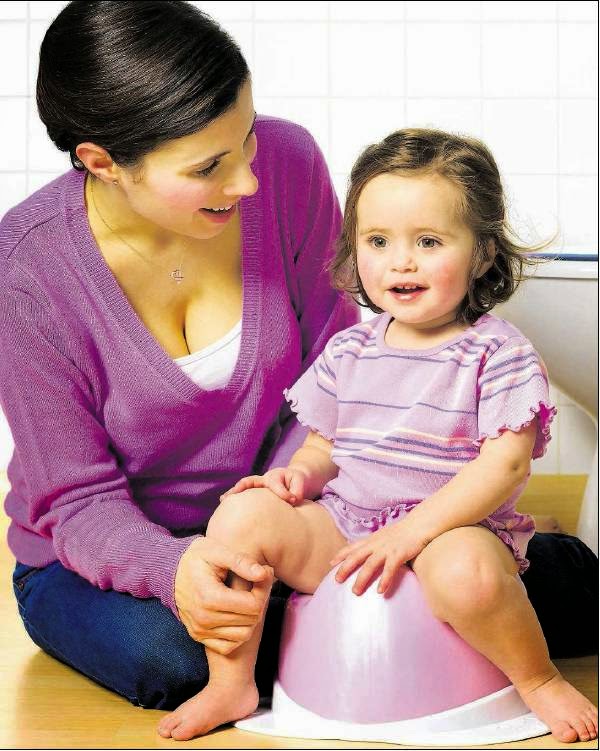 As they begin to practice removing her clothes before getting onto the potty, make it easier by providing clothes with Velcro fasteners or loose elastic waistbands. (They may find it easier to remove her clothes while lying down.)
As they begin to practice removing her clothes before getting onto the potty, make it easier by providing clothes with Velcro fasteners or loose elastic waistbands. (They may find it easier to remove her clothes while lying down.)
Spina bifida and spinal cord injury
Spina bifida, spinal cord injury, or spinal tumors create toilet-training problems for young children similar to those of cerebral palsy. But since most children with this condition never develop an awareness of when they need to go, few can ever fully use a toilet. You can, however, teach your child to remove urine through a catheter on a regular basis, and to visit the bathroom for bowel movements on a regular schedule. (A high-fiber diet with plenty of liquids and meals served on a regular schedule will make this process easier. Sometimes a stool softener or even a suppository or enema is needed.) Since your child will find it difficult to remove her clothing, be sure to provide them with Velcro fastened clothes and allow them to lie down to undress if necessary.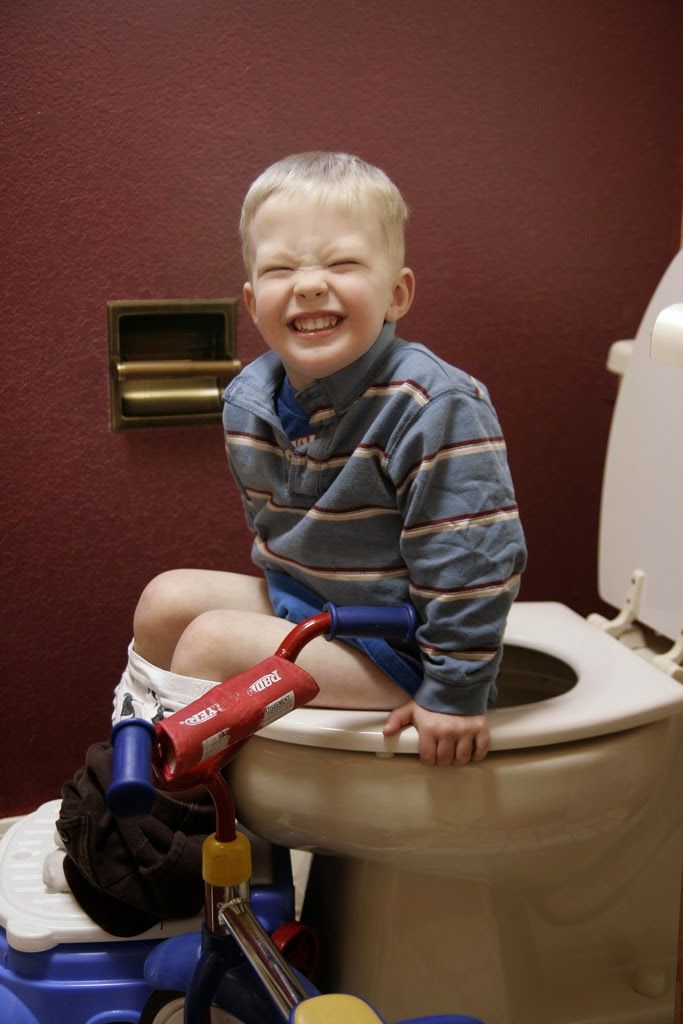
A child with spinal cord dysfunctions will likely not feel the need to move their bowels and have a greater risk of being constipated. Help prevent constipation by giving them enough fluids and a diet high in fiber. They may need to be on a bowel regimen designed so that they have a bowel movement at home and then does not have a bowel movement at school. Your pediatrician and therapist should be able to help develop a successful program for your child. They will need regular catheterizations, and either an aide or school nurse will have to help until your child can perform their own catheterizations.
Parents of children with physical disabilities such as cerebral palsy or spina bifida may become so distracted by the need for special equipment or physical support that they neglect the cognitive and emotional support that all children need to succeed at toilet training.
While installing that special potty in the bathroom, talk with your child about using the potty and why it’s important.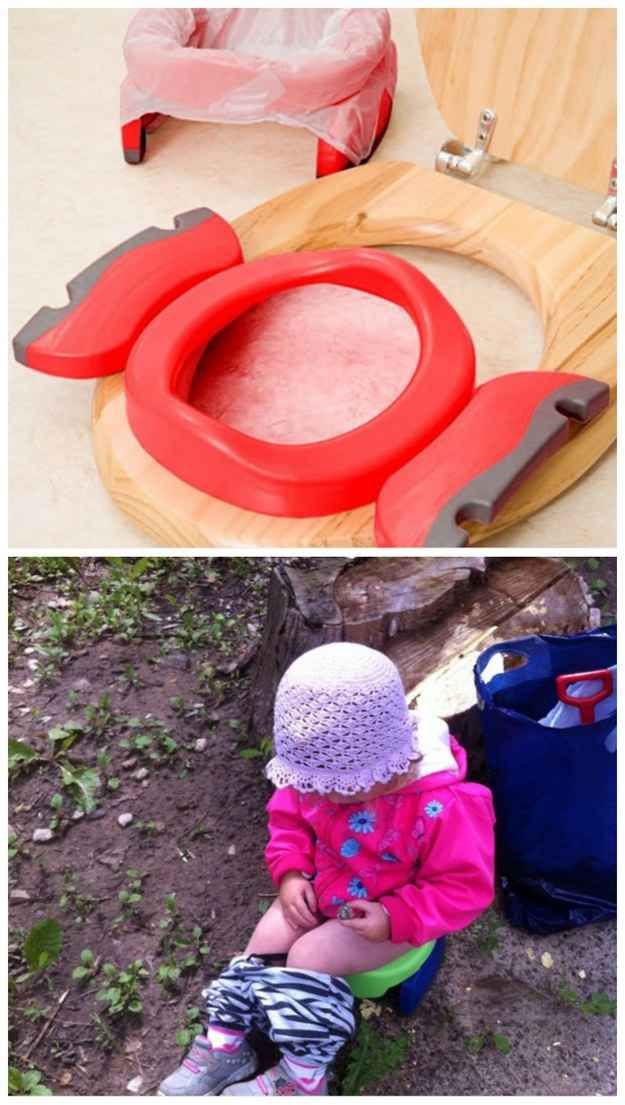 Let them observe you and others using the bathroom, and praise and reward them when they succeed even a little bit. Resist the temptation to "let things go" when there is difficulty and remain firm about the schedule or routine you have created—unless the experience becomes negative and your child becomes very resistant. Remember, their progress is especially significant if it increases their self-confidence and prepares them for more challenges. Give them all the information, attention and support they need to succeed.
Let them observe you and others using the bathroom, and praise and reward them when they succeed even a little bit. Resist the temptation to "let things go" when there is difficulty and remain firm about the schedule or routine you have created—unless the experience becomes negative and your child becomes very resistant. Remember, their progress is especially significant if it increases their self-confidence and prepares them for more challenges. Give them all the information, attention and support they need to succeed.
Behavioral and mental disorders
Your experience toilet-training a toddler who has been identified as having developmental or behavioral difficulties will depend a great deal on your particular child’s temperament, behavior patterns and coexisting conditions. Your knowledge of your child’s strengths, weaknesses, tendencies and interests will help the process.
Toilet training can be particularly trying for parents of children who have developmental disorders or behavioral difficulties. This includes those with
autism,
fetal alcohol syndrome (FAS),
oppositional defiant disorder (ODD), and, in cases when it is diagnosed this early,
attention deficit /hyperactivity disorder (ADHD). Many children with these conditions may not be strongly motivated, or sufficiently equipped, to respond to the social reinforcements that work so well with other children ("What a big boy!"). For some, small tangible rewards such as a sticker or small toy can be effective.
This includes those with
autism,
fetal alcohol syndrome (FAS),
oppositional defiant disorder (ODD), and, in cases when it is diagnosed this early,
attention deficit /hyperactivity disorder (ADHD). Many children with these conditions may not be strongly motivated, or sufficiently equipped, to respond to the social reinforcements that work so well with other children ("What a big boy!"). For some, small tangible rewards such as a sticker or small toy can be effective.
Many find it extremely difficult to adjust to any change in routine. Some are particularly sensitive to touch and other sensory input and become upset by the frequent pulling off and on of clothing, the physical closeness with an adult and the unfamiliar surroundings of the bathroom.
For some children, simply learning the abstract concept of potty use can be complicated. For example, some children with behavioral disorders do not naturally imitate their parents’ or peers’ behavior. Others learn only through simple imitation or other concrete, nonverbal demonstrations.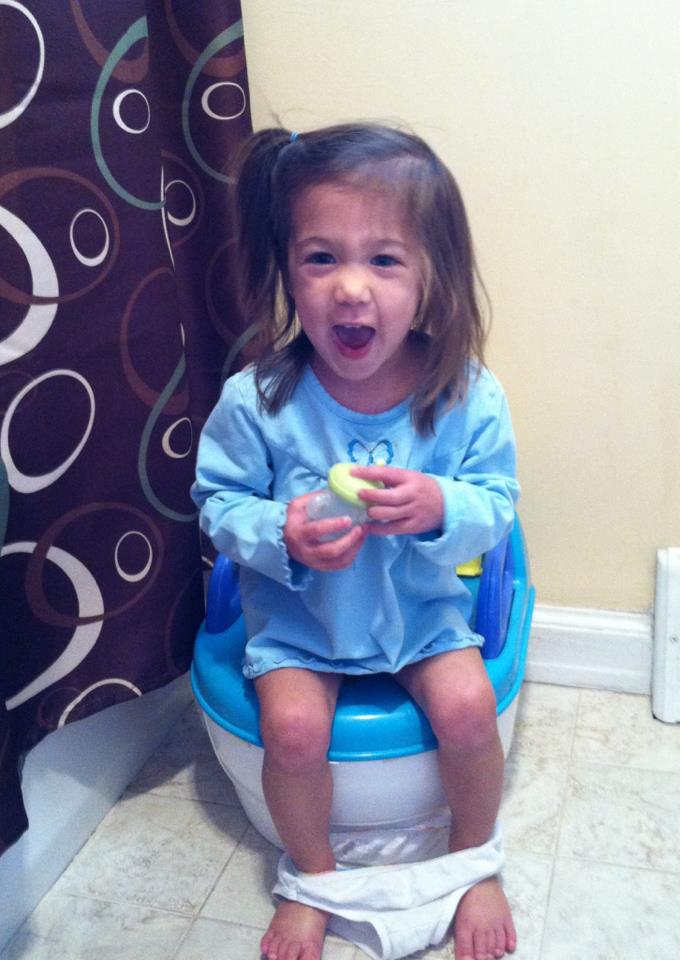 Such complications in the training process mean that early efforts can create a high level of frustration in your child and may lead to displays of temper, stubbornness, and refusal to cooperate.
Such complications in the training process mean that early efforts can create a high level of frustration in your child and may lead to displays of temper, stubbornness, and refusal to cooperate.
Despite challenges, most children with special needs—whether they have physical challenges or behavioral issues—can be toilet trained, though in some cases the process may take up to a year or even longer. They may require help from an occupational or physical therapist or a rehabilitation engineer.
Your first step is to determine whether your child is ready to start training. Usually the time to think about beginning is when you notice that they can stay dry for an hour or more at a time, has regular bowel movements, is aware that he is about to pee or poop and dislikes being wet or soiled. It is also important to have your child examined by their pediatrician, since they may be at a higher risk for constipation or loose stools, which may interfere with training.
Once you have decided to begin, observe your child and consider carefully the specific traits, patterns of behavior, and obstacles that may impact their learning process.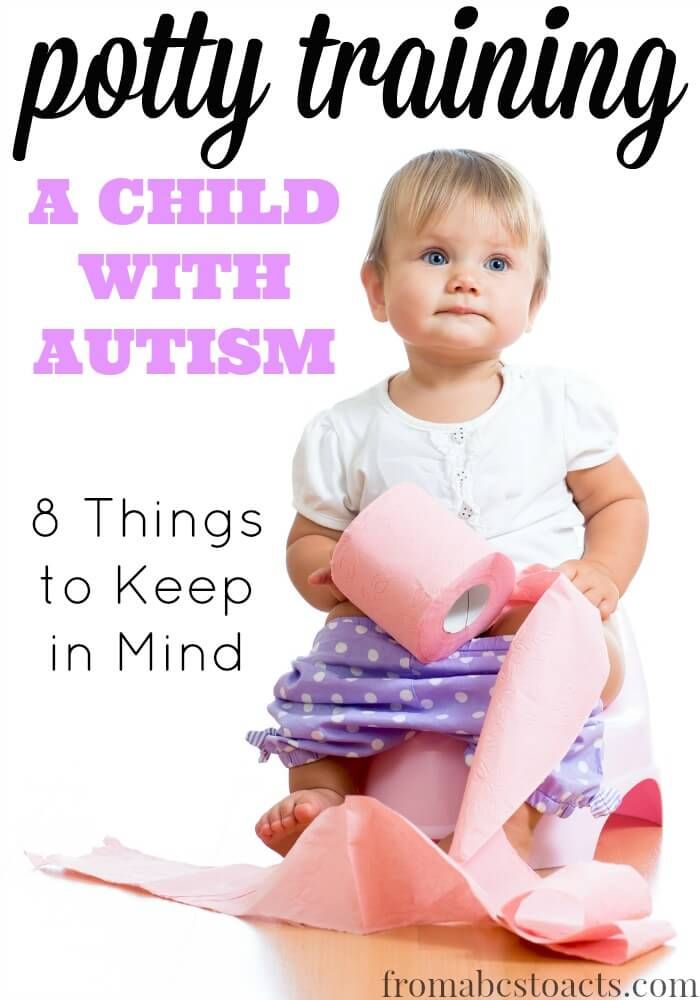 If they seems to dislike entering the bathroom, determine the cause of their discomfort. Is it the smell of disinfectant? The cold floor? The flushing toilet? Change or fix it if possible (change cleansers, put socks on their feet, move their potty away from the noisy toilet).
If they seems to dislike entering the bathroom, determine the cause of their discomfort. Is it the smell of disinfectant? The cold floor? The flushing toilet? Change or fix it if possible (change cleansers, put socks on their feet, move their potty away from the noisy toilet).
If they do not overtly signal the need to go, do they pause just before voiding or otherwise behave in a way that will provide you with a cue? At what times, or how long after eating or drinking, does he usually pee or poop? What foods, toys or other objects are they most passionate about? These can be used as tangible potty-training rewards, which may prove more effective than praise.
Identify how your child learns best. Some respond to firm but gentle physical demonstrations (being placed on the potty at regular times). Others do best with a formal routine containing a series of simple and predictable steps (verbally explained and reexplained, illustrated with pictures, or listed on a chart). Still others do best with offhand comments and conversations that inform without inviting resistance.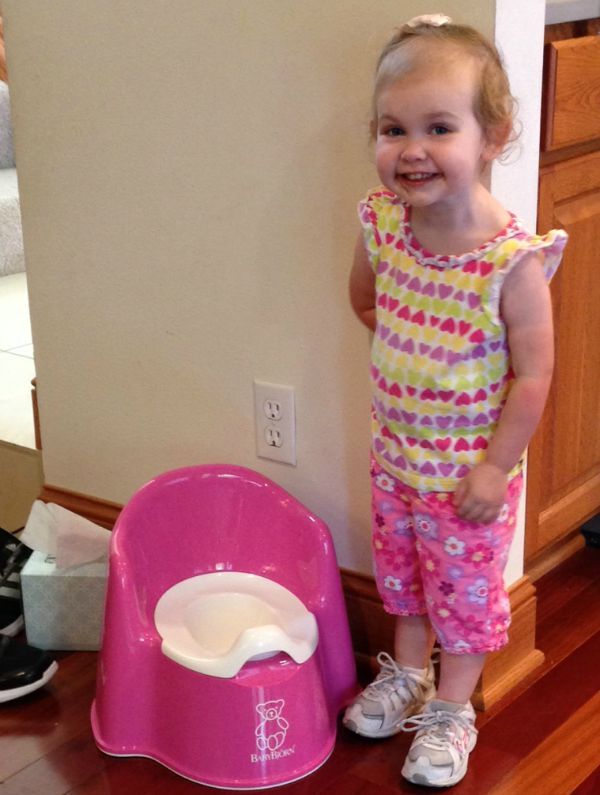
Intellectual Disabilities and Developmental Disorders
Most children with a developmental delay, an intellectual disability, or an autism spectrum disorder can be toilet-trained. The time it takes to achieve success ranges from a few months to a year or more. The process becomes easier as your child achieves at least a minimal level of verbal ability, is able to manage their clothes (perhaps with some help from you), and shows awareness of the need to go.
Toilet training for children with developmental delay, intellectual disability or autism spectrum disorder can be quite similar to training for other children, but sometimes it is not. Like with other children, as you introduce your child to the concept of potty use, it often helps to keep explanations simple. Start by checking the state of their diaper or pants every hour or so and offering a one-word, nonjudgmental comment when they are wet ("Wet!"). After you change them, smile and say "Dry!" If their verbal skills are limited, you might substitute a special gesture or sign for the words
wet, dry, potty, need to go, and so on.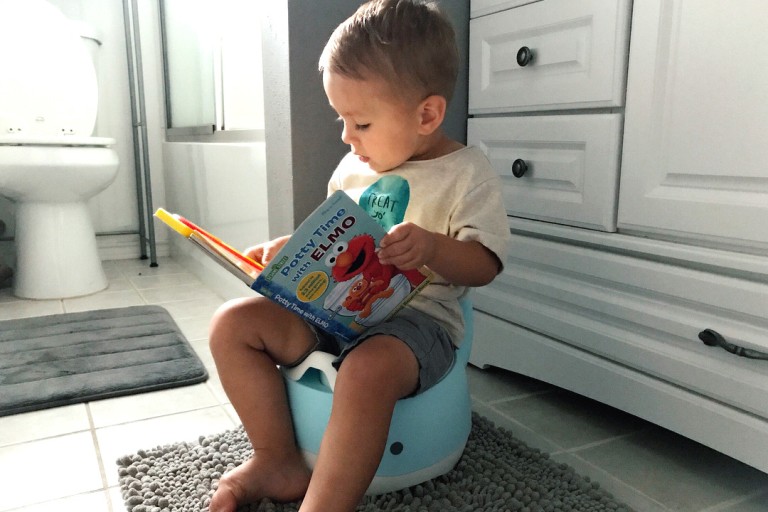
Begin bringing them to the bathroom with you when you need to use it. Smile and say "Dry!" after you’ve finished and pulled your pants up. If at all possible, have your child observe other children using the bathroom, too. They may make the connection between themselves and another child more easily than between themselves and you. After you’ve finished and are dressed, show them how happy you are and tell them "Dry!" If they have a favorite doll or stuffed animal, use it to play "potty," demonstrating again how the potty is used.
When they are ready to begin using the potty, begin setting them on it at regular times—quite frequently at first (as frequently as you checked them for wetness earlier) and then gradually settling down to the times when they usually go. Try to keep them on the potty for five or ten minutes at a time—keeping them company, reading to them, playing children’s music and otherwise ensuring that they stays in place long enough to succeed. Once they do urinate into the potty, give him a big smile and say "Pee!" (or whatever word you have chosen for this event).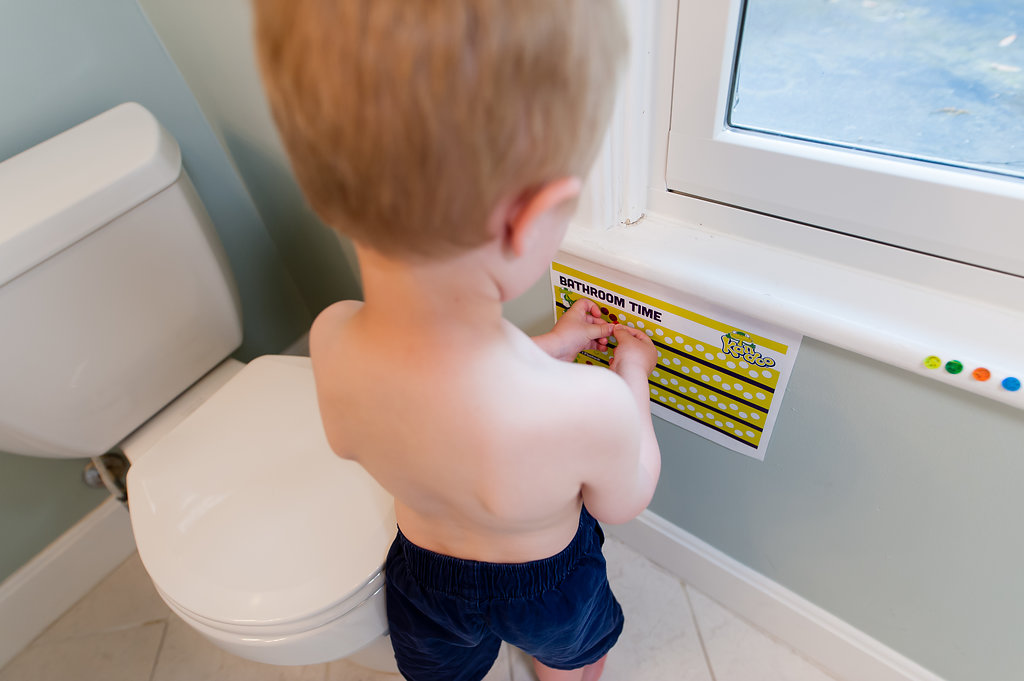 Help them wipe off and then praise them with a happy "Dry!" and give them a reward. Eventually, with enough repetition, they will understand the connection.
Help them wipe off and then praise them with a happy "Dry!" and give them a reward. Eventually, with enough repetition, they will understand the connection.
If your child has an intellectual disability or developmental delay, it is best to toilet train one step at a time. Don’t expect your child to learn to signal or announce their need to go, pull down their pants, use the potty, wipe their bottom and wash their hands all at once, the way their peers might. Toilet training will work best if you focus on the actual act of peeing and pooping first and address the other skills later. It is more important to keep them motivated than to achieve instant success.
The information contained on this Web site should not be used as a substitute for the medical care and advice of your pediatrician. There may be variations in treatment that your pediatrician may recommend based on individual facts and circumstances.
Potty Training Your Special Needs Child
Potty training a child is difficult under any circumstances, but when your child has special needs you will need to take their abilities and delays into consideration before you can begin potty training.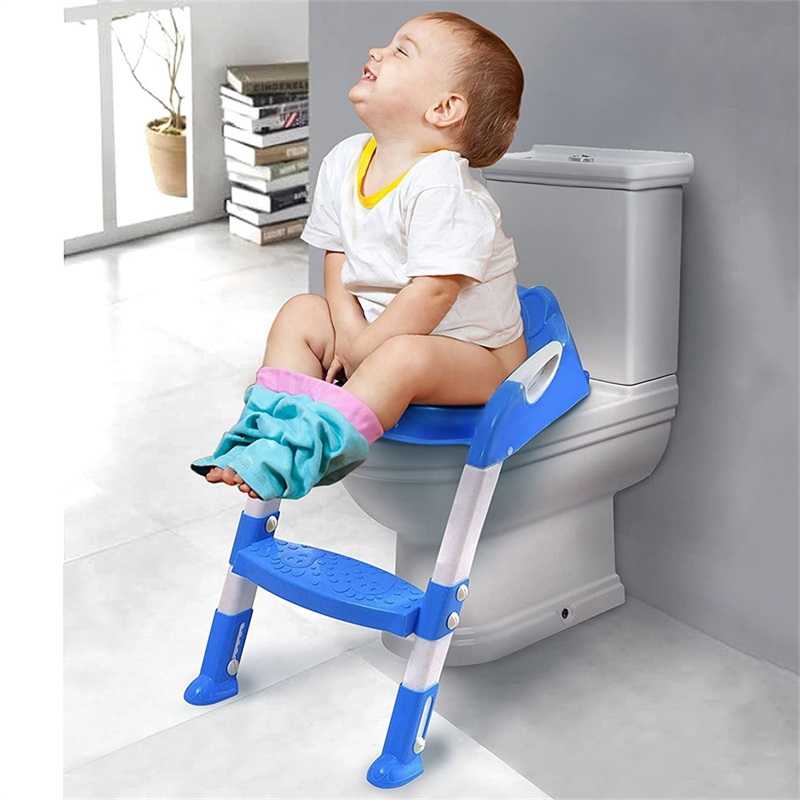
This may at first seem like a daunting task and I’m sure you’re starting to worry that your child will never move out of diapers, but if you take your time and prepare your child you can achieve potty training success!
The first step in potty training is to familiarize yourself with the basics behind the task. You may want to begin by reading our article on potty training for general parenting concerns.
When you’ve got those basic concepts down (and I’m sure you’re already aware of which tactics will work for your special child and which won’t), you’ll be ready to decide if your child is ready to begin potty training.
When Is My Child Ready to Begin Potty Training?
There are a few signs that will let you know that your child is physically ready for potty training. For example, you may notice that your child’s diaper stays dry for about two hours at a time during the day, their bowel movements come at regular times, and (usually) they stay dry through the night.
For normally developing children this will usually happen between the ages of two and slightly after their third birthday.
But it’s important to remember that children with special needs move at their own pace and forcing potty training on a child who just isn’t developmentally ready will not only be a waste of time, it will also be a horrible experience for both you and your child.
How will you know when your child is developmentally ready for potty training? Here are some signs to look for…
|
Of course, not all kids will be able to do all of these things, but you should have a good feel that your child is on the right track developmentally to handle potty training. If you feel your child is both physically and developmentally ready to begin potty training, then it’s time to get started!
Some Tips to get You Started
- Begin by keeping a record of your child’s dirty diapers. Note in a notebook or on a chart when your child urinates or has a bowel movement through out the day. When you begin potty training you’ll have a good idea of how often your child will need to go and when.
- Tell your child that you will be potty training. It’s good to keep your child informed and involved of what’s going on. If you can, get them to help you with their diaper changes and describe everything you are doing so that they are very aware of the process.
- Get your child interested in the toilet. Before you begin potty training, get your child in the bathroom and show them around. Let them touch the toilet (I know, it’s yucky, but if your child is visually impaired they need to know what they’re up against!) and hear it flush.
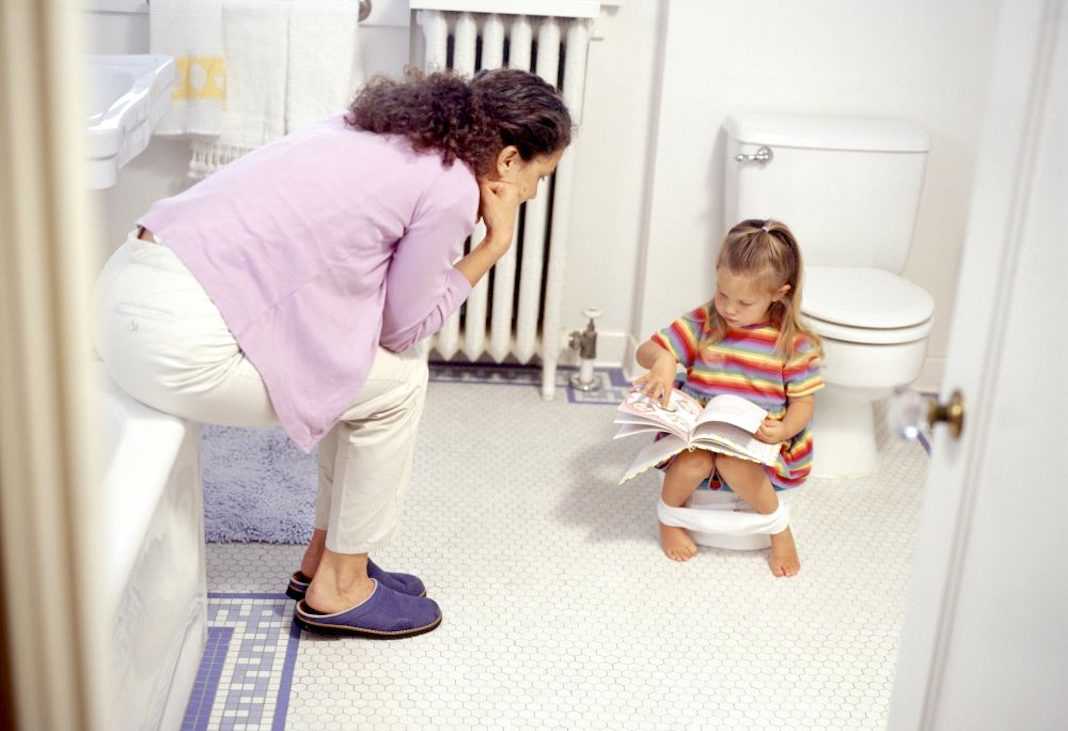 Explain what the toilet is for and then show them how to wash their hands. Some kids really love washing their hands in the sink and this in itself can become a fun reward for using the potty.
Explain what the toilet is for and then show them how to wash their hands. Some kids really love washing their hands in the sink and this in itself can become a fun reward for using the potty. - On potty training day, be sure to drink plenty of fluids. A hydrated child will need to use the potty more often and will have a better concept of when their bladder is full.
- Set a potty timer to go off every hour after your child uses the potty. When the timer goes off, it’s time to go to the potty. This will keep both you and your child aware of the potty and it will take the pressure off of you. You’re not telling your child to use the potty, the timer is!
- Don’t wear diapers during potty training. Diapers whisk wetness away from the skin. You want your child to be as aware as possible of the discomfort of being wet so that they can learn to use the potty before an accident happens.
- Get them on the real toilet as soon as possible.
 Rather than working on potty training in a small potty seat that sits on the floor, try to get your child on the real toilet as soon as you can. This will help them understand where they are heading (your goal is to get them on that toilet eventually anyway, isn’t it?) and will solidify the concept of “toilet” for them. A good potty seat that sits directly on the toilet is the Baby Bjorn adjustable toilet seat.
Rather than working on potty training in a small potty seat that sits on the floor, try to get your child on the real toilet as soon as you can. This will help them understand where they are heading (your goal is to get them on that toilet eventually anyway, isn’t it?) and will solidify the concept of “toilet” for them. A good potty seat that sits directly on the toilet is the Baby Bjorn adjustable toilet seat. - Support your child’s feet while on the potty. If your child is not using a small potty on the floor, make sure their feet are not dangling from the big toilet. It may be hard for your child to balance on the toilet, especially if they can’t see, so give them as much physical support as possible. Consider installing handicap rails if you think it will help your child.
- Always reward success! When your child does use the potty successfully be sure to praise them and hug them! Also have a treat of some sort nearby that they only receive after using the potty.
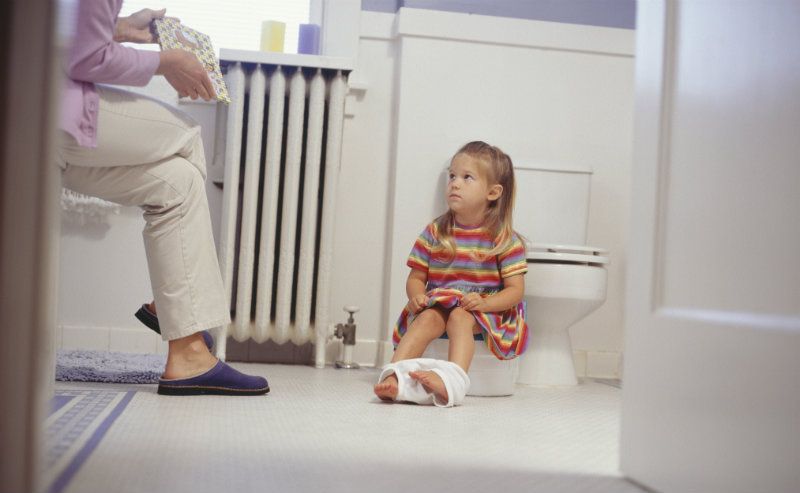 You can even set up a tactile chart using glue to draw small squares and fuzzy stickers so your child can see how many times they’ve used the potty successfully.
You can even set up a tactile chart using glue to draw small squares and fuzzy stickers so your child can see how many times they’ve used the potty successfully.
Communicating the Need to Go
One of the biggest difficulties in teaching a special needs child to use the toilet is probably communication. If your child is physically ready and for the most part developmentally ready, but they can’t verbally tell you when they need to use the potty, then how will you ever know? Trying to anticipate their needs without communication would be difficult at best and most certainly would lead to quite a few unintended accidents.
Here are a couple of ideas to help you get around the communication problem:
- Use sign language.
We taught our son some simple signs when he was very young. One sign he picked up right away was diaper. When it was time to start potty training he still wasn’t using much functional language and he couldn’t walk to the potty himself, but since he could sign when his diaper needed changing we knew we could work with that little bit of language to help him tell us when he needed to go.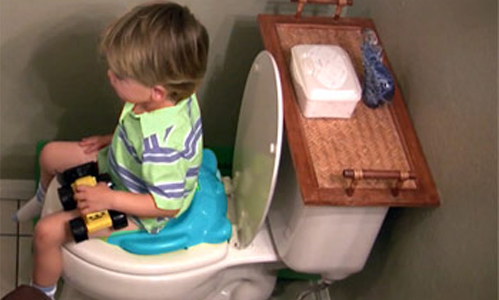 Learn more about teaching visually impaired babies sign language.
Learn more about teaching visually impaired babies sign language. - Use tangible symbols.
If your child doesn’t have the coordination for signs, you may want to try using tangible symbols. Keep these symbols handy so your child can communicate their need to use the potty by simply touching the symbol. A good symbol to use for the bathroom is a piece of remnant tile. Most bathrooms have tile in them somewhere and the tile will feel reminiscent of the toilet itself.
If you’re feeling adventurous consider exploring other popular potty training methods, such as Oh Crap! potty training or 3 day potty training. These approaches aren’t for everyone, but they can give you some good ideas if you feel you aren’t making progress.
Good luck with your potty training and remember that this is an adventure for both you and your child. It won’t be easy and there will be a lot of accidents along the way, but the reward sure is worth it!
Read this article in Arabic: قراءة هذا المقال بالعربية
How to potty train a child
We asked family counselor Nina Hoffman about when and how to start potty training a child. The result was a huge and very detailed text-instruction with tips, life hacks and other useful things.
The result was a huge and very detailed text-instruction with tips, life hacks and other useful things.
In Russia, it is customary to start potty training after a year (and some start the process even earlier). Is there any point in early learning, and what should parents focus on?
Weaning from a diaper is a path from addiction to independence, so it is very important that the child is ready for this process on three levels:
Physically, the child's brain is ripe for sphincter control. The child can take off and put on his underpants/pants, sit on the potty or climb the stairs on the toilet.
Cognitively - the child understands and realizes when he wants to pee and poop, and knows what to do.
Emotionally, the child has matured to be responsible for the fulfillment of his needs.
/
Parents who begin potty training at an early age need to understand why they are doing it.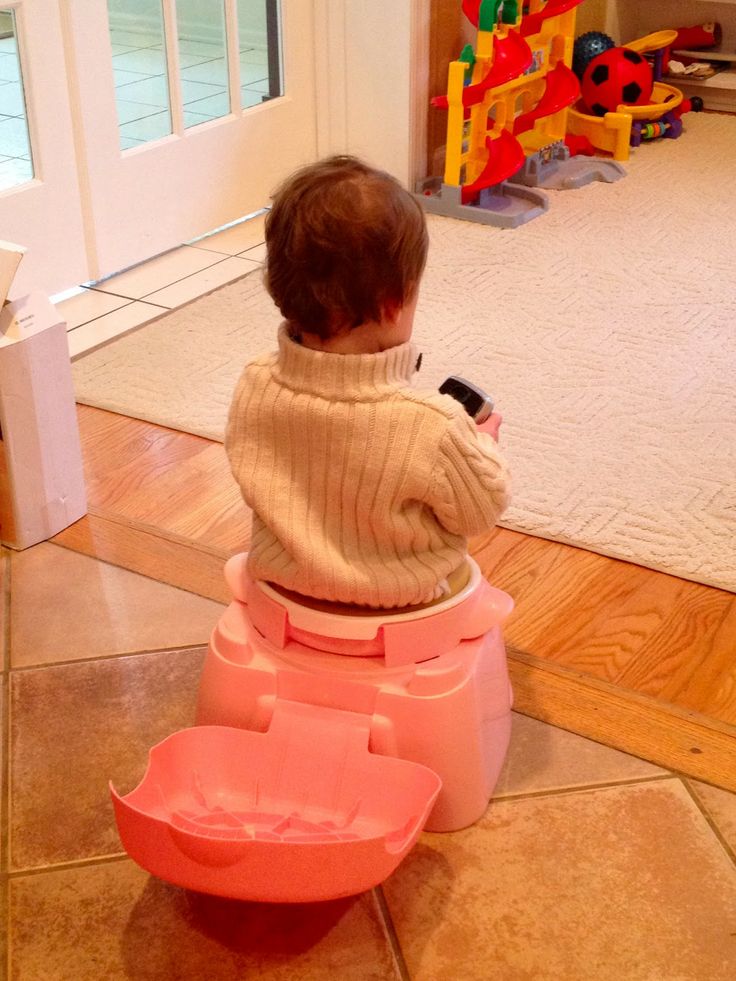 If they want to save money on diapers or care about the environment, then it makes sense to refuse "pampers". In other cases, no.
If they want to save money on diapers or care about the environment, then it makes sense to refuse "pampers". In other cases, no.
A child under one year old and a year old cannot yet manage the process himself. Parents can train him, but he will still pee and poop. And it is the parents who will have to make sure that there are no punctures.
The optimal age for potty training is from two to three and a half years (it is important to focus on the child, this is very individual). At this time, children, as a rule, are ready to take care of their own physical needs and want to be "like big."
What do you think about dropping off babies? To what extent is this correct and necessary?
The only thing that can give a mother the birth of a baby is a closer connection with him. Mom learns to see and distinguish the signs that the baby gives before pooping or peeing.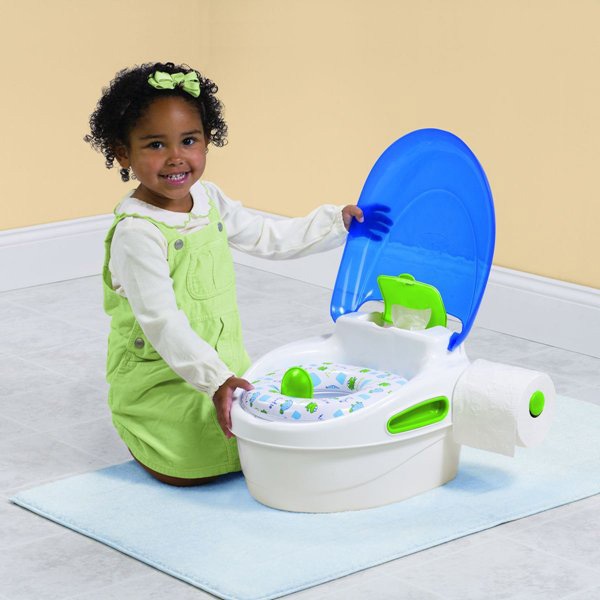 She is more attentive to his needs, knows better what time her child wants to go to the toilet. When a mother has to watch the child closely, she is more "attuned" to him. But there are also a number of restrictions that will have to be faced: walking in cold weather, planting in public places, the social life of the mother.
She is more attentive to his needs, knows better what time her child wants to go to the toilet. When a mother has to watch the child closely, she is more "attuned" to him. But there are also a number of restrictions that will have to be faced: walking in cold weather, planting in public places, the social life of the mother.
From the point of view of potty training, there is no point in early planting, unless the child will be more aware of his feelings associated with it. Perhaps those who start early planting will find it easier later on.
In any case, up to two or more years, the mother will still have to monitor the child and control the process on her own. Many families, initially set on giving up diapers, eventually begin to put them on their child during walks, trips to the clinic or other public places, which generally confirms the fact: infant disembarkation does not work.
When is it better to potty train: in winter or in summer? What to focus on: the time of year or age?
There are no firm laws here, but it is much more convenient to start the process in the warm season.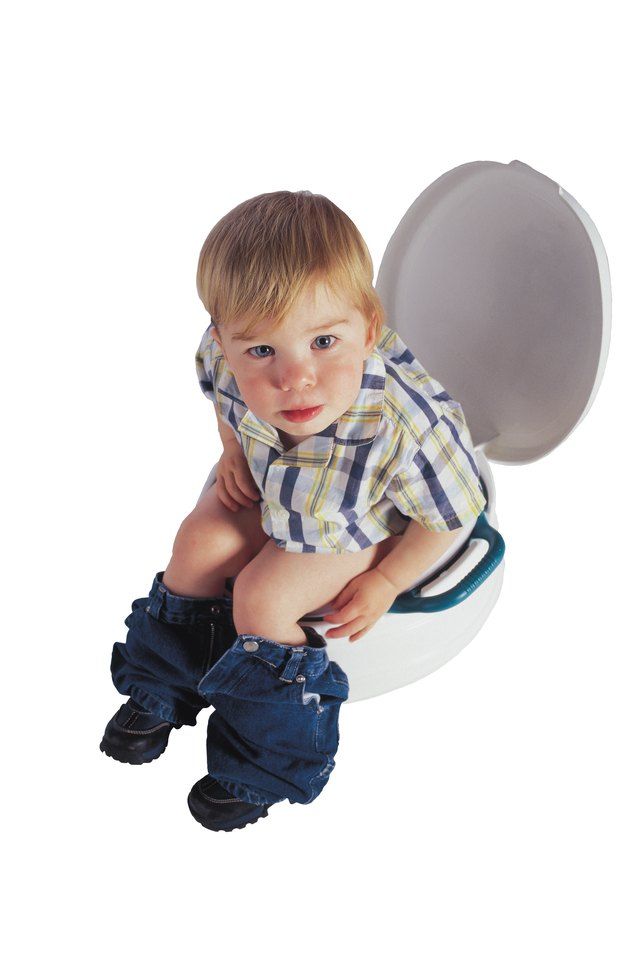 Many people think that in winter, "due to" the discomfort of wet shorts, the child will have more motivation not to pee. But negative motivation does not promote learning processes, so it’s better not to start in winter: it’s cold, you can catch a cold in tender places, more trouble with changing clothes, more clothes.
Many people think that in winter, "due to" the discomfort of wet shorts, the child will have more motivation not to pee. But negative motivation does not promote learning processes, so it’s better not to start in winter: it’s cold, you can catch a cold in tender places, more trouble with changing clothes, more clothes.
In the warm season, the child can run naked part of the time, it will be more clear to him what is happening with his body. The processes hidden by the diaper will now be visible. And parents to some extent can save on laundry.
/
Of course, you need to focus on the child. Sometimes children themselves say: “I want to pee like a big one”, take off their diapers and they don’t have punctures. This means that the brain has matured, and it doesn’t matter if it happens in winter or summer.
But sometimes there are false starts.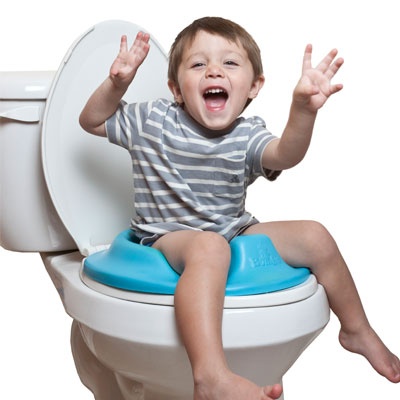 For example, a child looked at other children in the nursery and also wanted to go without a diaper. But he can’t: he constantly pees and doesn’t reach the pot. In this case, motivation decreases, and the baby may be uncomfortable.
For example, a child looked at other children in the nursery and also wanted to go without a diaper. But he can’t: he constantly pees and doesn’t reach the pot. In this case, motivation decreases, and the baby may be uncomfortable.
Parents should postpone potty training for a month or two. There is nothing terrible in this. The child needs to be told: “We tried, but now it didn’t work out. It's not scary, we'll try again and everything will work out! At the intermediate stage, diaper pants will help.
But there are cases when a child who has taken off his diapers can control the process, but he is too lazy. This is where mom and dad need to gently insist on continuing. The kid needs to be motivated: praise, tell everyone out loud how well he knows how to go to the potty, encourage (preferably intangibly, for example, give him more independence in other matters so that he feels the benefits of being an "adult").
Age plays a role, but you need to look at the child and the family: how ready everyone is to switch to a different rhythm of life and move on to greater independence of the child.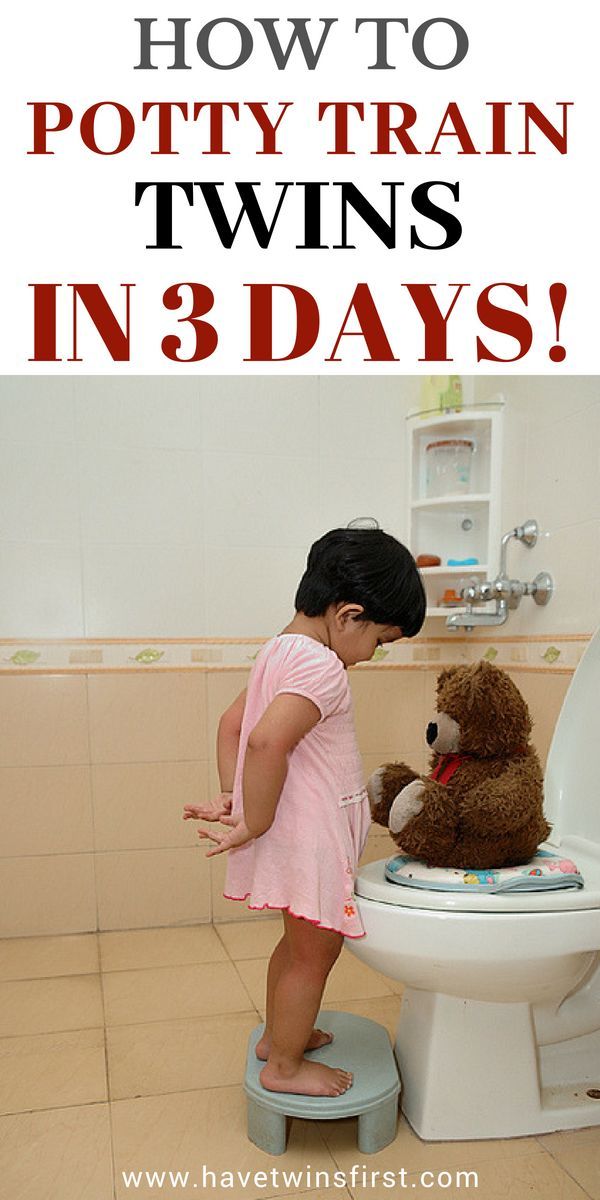
An article about a three-year-old who cannot use the potty, published not so long ago on our website, outraged readers. Is there an age limit when it is definitely necessary to remove diapers for a child (if you do not take into account special cases of health problems)?
It is important to understand that there is no harm from diapers as such. As a result, everyone masters this "science". If the child has no problems, then diapers, as a rule, become unnecessary at two and a half or three and a half years. Four-year-olds in diapers are the exception rather than the rule, and here it is worth looking for reasons why the child is still not in control of his shipments.
The harm from wearing diapers for a long time can mainly be emotional and social: children compare themselves with other children and get upset if they cannot prove their independence in an accessible way. And the ability to control your body and be responsible for the process is a confirmation of independence.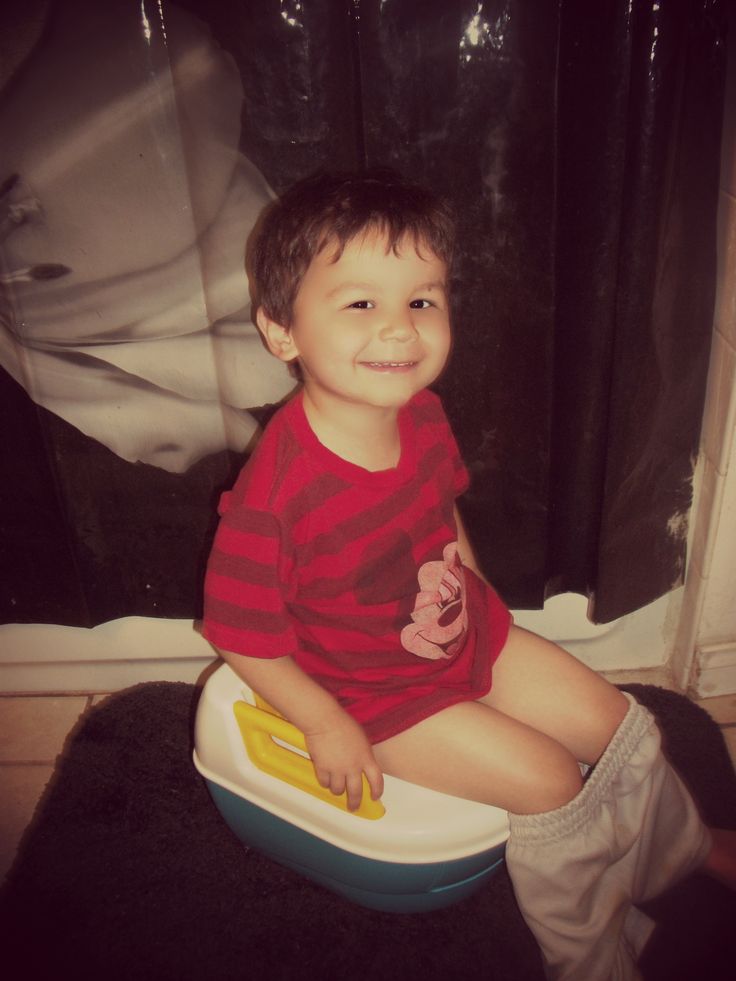 Parents should take this into account.
Parents should take this into account.
What should be the diaper weaning strategy?
I advise parents to treat potty training as a project , which needs time and attention. If there is something in the family that greatly distracts from this activity (parents have a lot of work, some kind of stress or something important that does not allow them to fully devote time to the child), it is better to postpone weaning from diapers for a month or two.
/
It is important to understand that the process belongs to the child, the dispatch of needs is his control. At the same time, it is still difficult for him to manage the process, so the responsibility of parents is to help and guide him.
Another tip: start preparing your child in advance . It is possible to show the baby of the same gender as the parent, how mom or dad pee.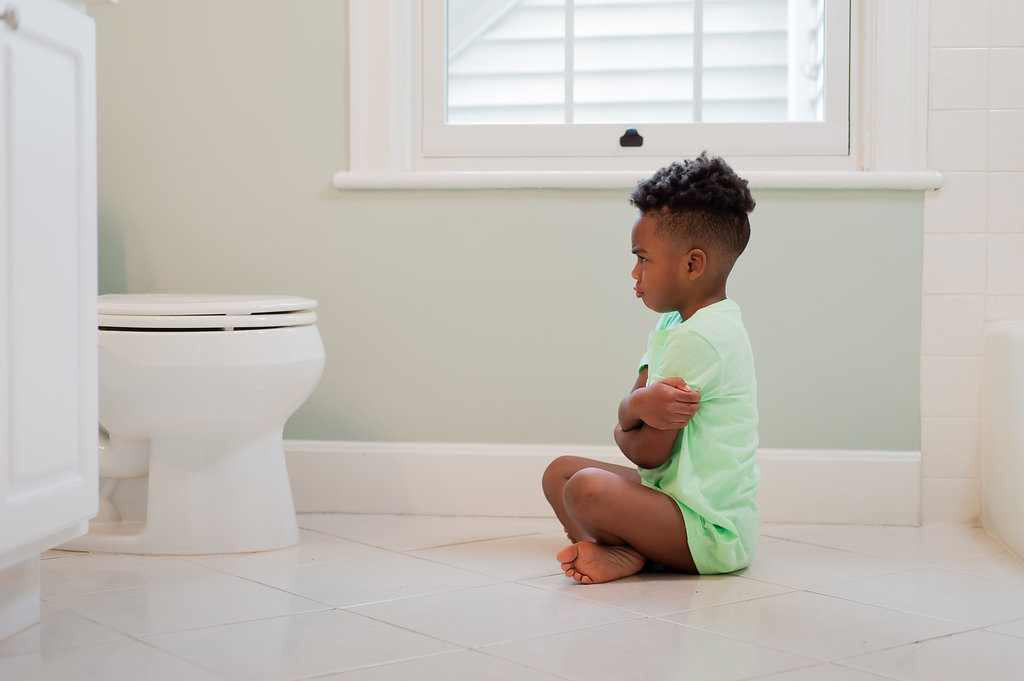 Watch books (“Max and the Diaper”, “Max and the Potty”, “Chick and Bricky: Puddle”, “It’s Time for the Potty” and others) or cartoons. Show the pot, explain what it is for. Or take them to the toilet, where everything has already been prepared in advance so that the baby is not afraid and comfortable (either an adapter for the toilet, or a seat with handles and steps).
Watch books (“Max and the Diaper”, “Max and the Potty”, “Chick and Bricky: Puddle”, “It’s Time for the Potty” and others) or cartoons. Show the pot, explain what it is for. Or take them to the toilet, where everything has already been prepared in advance so that the baby is not afraid and comfortable (either an adapter for the toilet, or a seat with handles and steps).
Be sure to talk to the child in advance about what is ahead of him. Talk about everything only positively, for example, "you have already grown so big with us, soon you will go to the toilet yourself, like mom / dad / older brother or sister." You can also invite him to tell that he wants to pee or poop, even before removing the diaper, so that he is better aware of his feelings.
Next, it is necessary to observe the baby for two or three days , noting at what time the child poops and pees, and then remove the diaper. For starters, only during the daytime, including during walks (maybe, with the exception of long trips at first). But for daytime and nighttime sleep, diapers should be left until parents notice that the baby is waking up dry more and more often.
But for daytime and nighttime sleep, diapers should be left until parents notice that the baby is waking up dry more and more often.
Parents need to watch their child for signs and talk about how they feel. Observation increases the chances of successful attempts and greatly increases the motivation of the child.
How to follow the signs?
For example, if the baby is already “dancing” from the desire to go to the toilet, but at the same time refuses, because he “does not want”, the parent should:
sit down in front of him to be at the level of the children's eyes;
ask: "Do you feel something pressing on your tummy?"
After an affirmative answer, say: “When you feel this way, it means that you want to write. Let's run! The sooner we run, the sooner we'll get back to the game!"
Parents should gently remind their child to pee before cartoons, games, walks, or offer to poop some time after eating.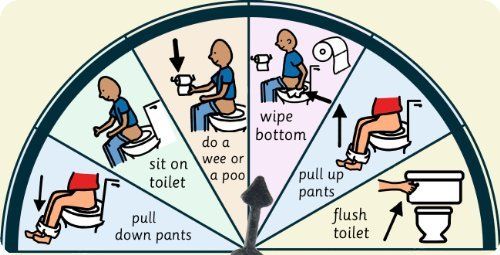 This will develop a set of habits in the child and help pay attention to their feelings.
This will develop a set of habits in the child and help pay attention to their feelings.
But even in this case, parents should be ready for rejection, because it is the child who controls his body, and not adults. So the baby may well describe himself, even if he was offered to go to the toilet shortly before.
In that case, he should never be scolded. But this fact cannot be ignored either (if you say: “It's okay!”, then the child will continue to do so). It's best to come up and call a spade a spade: "You pee in your pants, it's unpleasant and you're wet. Now we need to stop the game and change clothes.” The logical consequence of the choice can help the child to agree with the parent's arguments next time and interrupt the game or watching the cartoon.
When this stage begins to work, that is, the child calmly goes to the toilet and always or almost always succeeds, it is important not to stop there, but to continue to move forward, towards independence.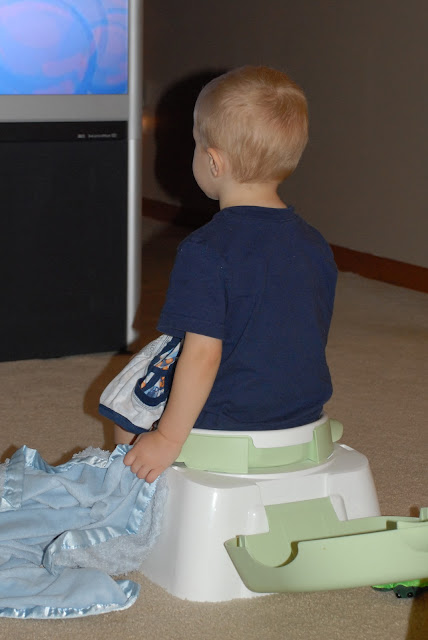 When a child wants to pee or poop, you need to take him to the toilet, leave him there and ask him to call when he is done.
When a child wants to pee or poop, you need to take him to the toilet, leave him there and ask him to call when he is done.
At the next stage, the parents lead only up to half the way, and then the baby goes on his own. The daytime part of the process is over when the child himself goes to the toilet, does his own business and calls someone only to help wipe the buttocks.
/
It is the parent's responsibility to remind the child to go to the toilet on time, warn about the consequences and help change clothes (it is important to give them maximum independence in this as well) if the baby did not do what was needed on time. The responsibility of the child is to pee or poop, realizing his desires.
If a child wakes up in a dry diaper for ten days out of two weeks, then the diaper can be removed at night.
Are there any life hacks that will help a child not be afraid of potty training?
I advise you to tell your child about the process of digestion in a language he can understand before weaning from diapers. And it's better, oddly enough, to do it while eating. While the baby is eating, the mother can comment on his actions: “Now your food is in your mouth, and then it will begin to travel through the body. It will go through the tube into the bag, and then go down below, ”and so on.
And it's better, oddly enough, to do it while eating. While the baby is eating, the mother can comment on his actions: “Now your food is in your mouth, and then it will begin to travel through the body. It will go through the tube into the bag, and then go down below, ”and so on.
Reassure the child, tell them that the body does not throw away anything superfluous, everything useful remains in it. But garbage is poop. Children are sometimes afraid that some part of them is separated and falls. If they understand that they are not losing anything important, and it is not from themselves that a piece of something has fallen off, there will be less fear of the toilet.
In addition, you can come up with a fairy tale or a song that will help the baby "order the poop out" and go to the toilet. At first, this will help the child understand that it is he who controls the process.
/
Be sure to praise the child for the result, and also let him flush the water himself.
It is better if the potty is in the toilet or in the bathroom, do not plant the child in front of the TV or in the kitchen. And don't make him wait for the result. From sitting on the toilet for half an hour with cartoons, only harm: the child ceases to understand why he is sitting, and when he finally starts to poop or write, he is so fascinated by the cartoon that he does not realize what he is doing.
In addition, after each unsuccessful attempt, interest drops. The task of parents is not so much to keep clothes dry as to teach the baby to understand what he is doing and control the body. All adult family members and the nanny need to agree on a consistent response and a common potty training scheme for all.
Which is better: a potty or a toilet bowl?
The advantage of the pot is that it is small. The child does not feel uncomfortable. Nothing falls off with a splash and goes nowhere.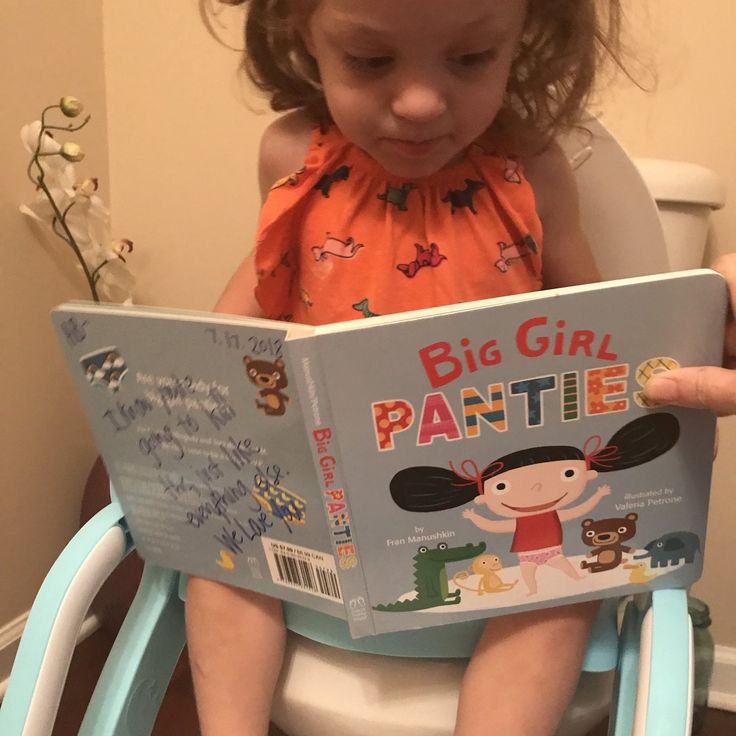 On the other hand, a child who is accustomed to a potty dooms his parents to carry this item with him everywhere for at least another six months.
On the other hand, a child who is accustomed to a potty dooms his parents to carry this item with him everywhere for at least another six months.
A toilet bowl equipped with special devices is technically more convenient: nothing extra needs to be cleaned and washed. But you still need to look at the child: how comfortable he is. In addition, toilet training bypassing the potty saves the time of toilet training after the potty.
How can parents stay calm during toilet training if punctures happen too often?
Parents also need to prepare.
If one of the parents is too squeamish, it means that the task of removing the diaper from the child should be transferred to the other. Children are very sensitive, they read parental emotions and may begin to be wary of the process. In addition, they can very quickly learn that this is an easy way to "manage the parents", which is highly undesirable.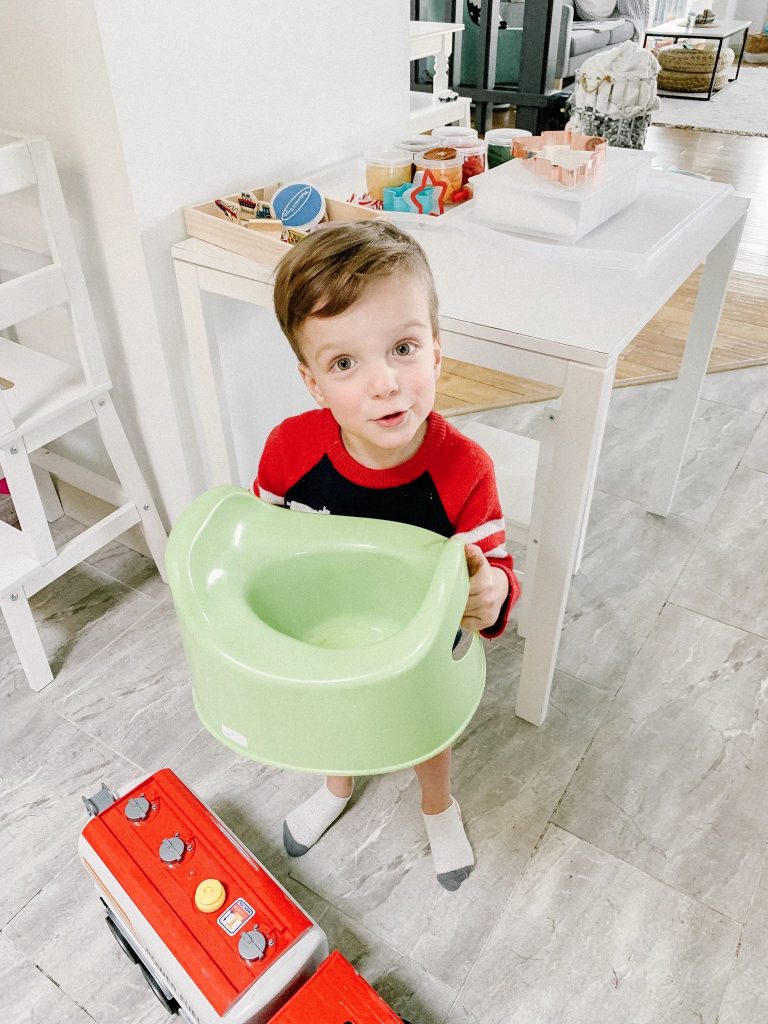
It is imperative to prepare the house.
Remove carpets that you don't want to ruin. Cover sofas with oilcloths, put a special sheet in a child's (and sometimes in an adult's) bed.
Buy baby clothes that are easy to put on and take off.
So that you don’t get irritated by the process when you constantly change clothes.
Do not react to everything instantly (we are not in intensive care).
Take a deep breath and switch to something else: the described pants will probably not be so annoying in a minute.
Remember that all failures and failures are only lessons.
These are hardships that must be endured in order to learn something.
Remember that children do everything not to spite their parents.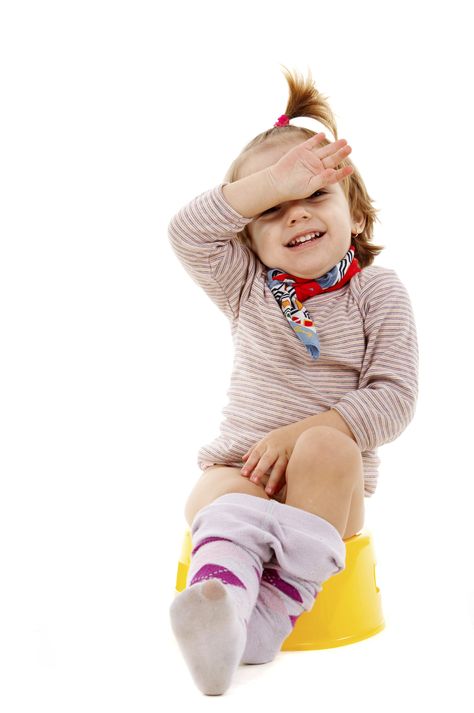
It just happens to them, you need to give time and patiently teach. For example, at first, children do not yet have experience, and they may miscalculate the time they have to run to the toilet from the moment when they already feel like peeing. Then they just freeze in place and write, because they understand that there is no time to do it.
In such cases, you need to calmly explain what exactly happened and how to do it next time, emphasizing a better choice. Gradually, children will learn to listen to their body and choose the behavior that will lead to a successful attempt.
Remember that this is not forever.
What to do if the child resists learning, defiantly does not want to sit on the potty or go to the toilet?
Praise the child. The more successful attempts he makes, the faster the family will come to the desired result.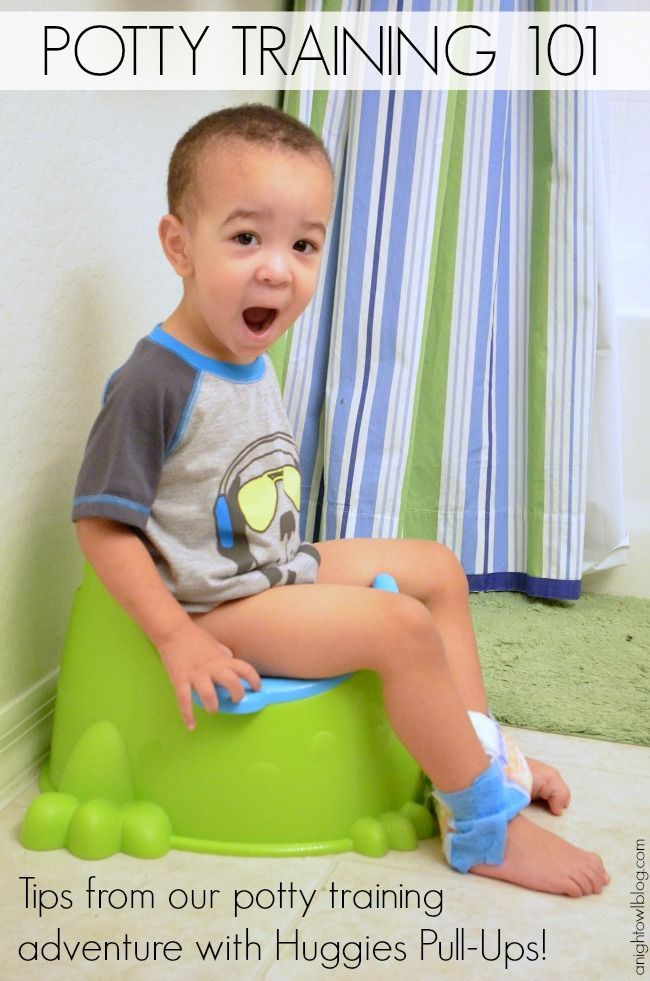 But if everything is done correctly, and the child still resists, you need to look for the reason. Perhaps the parents "squeezed out" or "understood" in the sense of control. Parents need to remember that eating, sleeping, and potty are three things they cannot do for their children, and children feel the association of parental mood with whether they poop or not, full or hungry.
But if everything is done correctly, and the child still resists, you need to look for the reason. Perhaps the parents "squeezed out" or "understood" in the sense of control. Parents need to remember that eating, sleeping, and potty are three things they cannot do for their children, and children feel the association of parental mood with whether they poop or not, full or hungry.
/
Dr. Carlos Gonzales wrote: “One of the rarely mentioned, but nevertheless universally recognized human rights is the right to defecate when we want to.” Therefore, sometimes you just need to remember this and let go of the situation.
The child may not sit on the potty because the mother shows how important it is to her. Not on purpose, but children can control the whole family in this way. In this case, most likely, the baby needs more choice and independence in something else, more control over his life.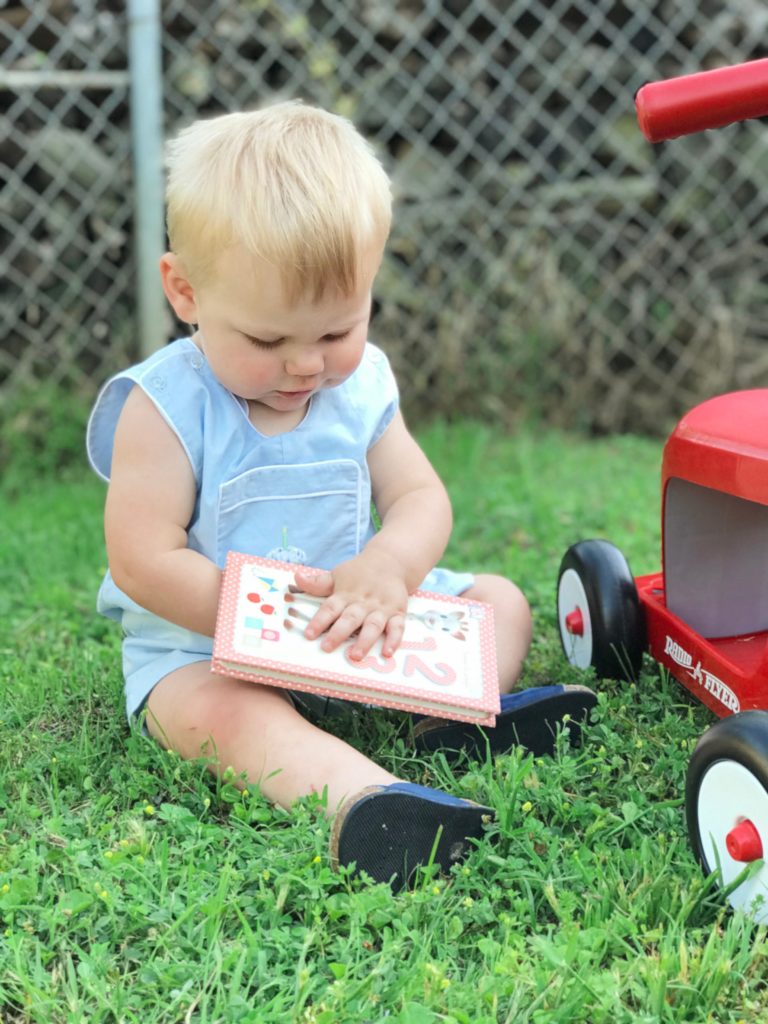 And most importantly, stay calm.
And most importantly, stay calm.
It is very important that the process does not cause negative emotions, because we are talking about control in general, and not just over the work of the corresponding holes - control over feelings, over emotions, over behavior. An unsuccessfully started potty training can provoke problems with incontinence at the physical level or, conversely, constipation; and on the emotional level, to cause excessive impulsivity or excessive restraint, slow down the development of independence and damage self-esteem and self-confidence.
Children need stability and confidence in calm, caring adults nearby. Then everything works out!
Still read on the topic
Chipsovosti
Listen to our podcast
90,000 Useful tips: how to teach a child to a pot of quickly and painlessDecember 26, 2017
your family came to an important life stage - the child is time to get rid of dieg learn to use a baby potty. And here comes the time for advice from all relatives and not quite people. Grandmothers give recommendations that have been tested by time and by the parents themselves, friends used their own experiments, and how much advice can be found on mother forums.
And here comes the time for advice from all relatives and not quite people. Grandmothers give recommendations that have been tested by time and by the parents themselves, friends used their own experiments, and how much advice can be found on mother forums.
It is impossible to say unequivocally that certain methods will be useful specifically for your child. Unfortunately, a universal way has not yet been invented - all children are not alike. In any case, it is important to do everything unobtrusively and try not to overdo it, otherwise you risk meeting a strong rebuff from the child and further negative attitude towards the potty.
Helpful Hints
In this article, we will give you a few tips based on the experience of many families and the advice of qualified pediatricians:
- Everything has its time, so don't try to potty train a six-month-old child. He simply does not yet have the physiological capacity to realize your ambitions. The muscles of the bladder begin to mature and function normally closer to the year, and the child will be able to control them on his own even later.

- Buy a potty in advance, let the baby get used to his presence. A little later, he will definitely show interest in him, and then you can make the first attempts to put him on the potty.
- Try to pay attention to the child's habits. Often the need for the fulfillment of natural desires occurs after eating and immediately after waking up. Plant the baby on the potty at this moment - certain connections will be formed in his mind. Over time, he will be able to control his sensations and associate them with a subject that is still incomprehensible.
- Another motive for learning to control your needs is the common discomfort of wet laundry. Therefore, there are so many opponents of the use of modern diapers. They perfectly absorb moisture and deprive the child of these unpleasant, but useful sensations.
- An interesting observation was made - children who are allowed to go naked at home get used to the potty much faster. Most likely, this fact is due to the lack of the need to take off your pants, because even one-year-old babies can be taught to be independent without any problems.

- Don't combine sitting on the potty with playing games or reading books, this is a place for strictly defined activities that require concentration. Yes, and you can sit like this for a very long time, and doctors do not advise to conduct sessions for more than 10-15 minutes.
- It is strictly forbidden to scold or punish a child for a puddle on the carpet or soaked clothes. Just gently remind him every time that he has a nice pot for this purpose. And, on the contrary, praise him for each victory, let him know that you are proud of such an independent kid.
- Have an older child show you how to sit on and use the potty. You can replace the “sample” with your favorite toy, depicting the scene you need in faces. Ask the baby to repeat after the doll, while repeating the call signs.
- Do not forget that refusal can be associated not only with simple whims, but also with a painful condition. At this moment, the kids may erupt teeth, they have a cold and a fever, and they just feel bad and the desire to learn something new is completely absent.
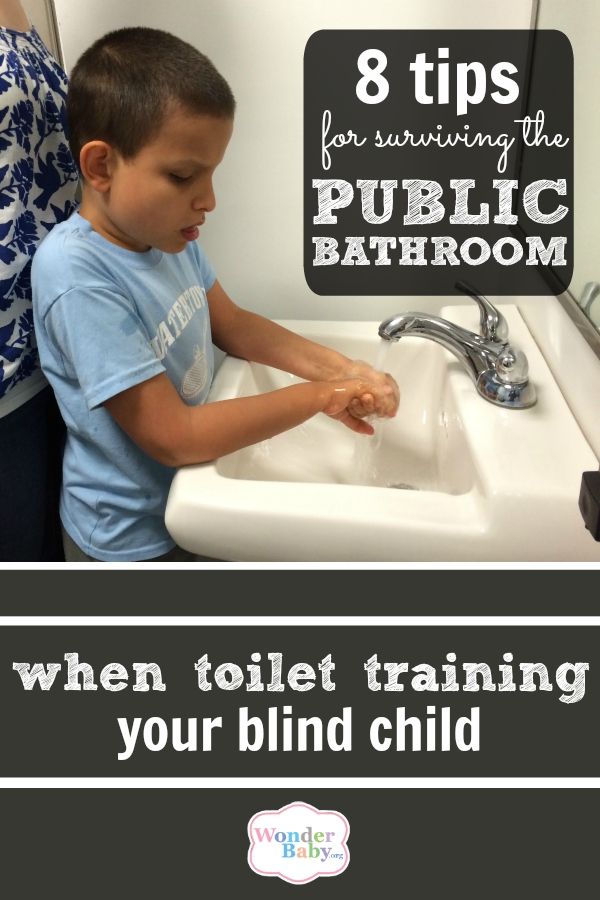
Slips can occur, and most often this happens during sleep, it is still very difficult to control yourself. And also embarrassment is a frequent occurrence during games, kids can be so passionate about the process that they simply do not hear the urges of the body.
Choosing a potty for children
All these recommendations are very useful and effective, but only if the potty is chosen correctly. There are so many models that parents often get carried away only with the outside, forgetting about the needs of their child. After all, the truth is, newfangled multifunctional products for some turn out to be a completely useless thing. You only need to remember that the pot should be comfortable and not become another toy. Although with a skillful approach, mothers can take advantage of all the benefits of modern interactive children's toilets.
Which potty to choose:
- For very young children, it is best to purchase a model with a diameter of no more than 12 cm, and as they grow older, change to a product with a diameter of 15 cm.

